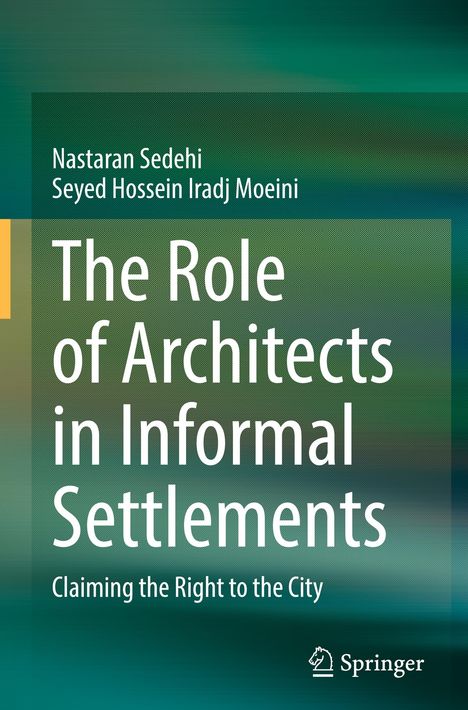Seyed Hossein Iradj Moeini: The Role of Architects in Informal Settlements, Gebunden
The Role of Architects in Informal Settlements
- Claiming the Right to the City
(soweit verfügbar beim Lieferanten)
- Verlag:
- Springer International Publishing, 10/2024
- Einband:
- Gebunden, HC runder Rücken kaschiert
- Sprache:
- Englisch
- ISBN-13:
- 9783031671241
- Artikelnummer:
- 12030408
- Umfang:
- 116 Seiten
- Gewicht:
- 348 g
- Maße:
- 241 x 160 mm
- Stärke:
- 13 mm
- Erscheinungstermin:
- 18.10.2024
- Hinweis
-
Achtung: Artikel ist nicht in deutscher Sprache!
Klappentext
With over one billion people worldwide living in informal settlements and enduring substandard housing conditions, these areas present one of the greatest urban challenges of our time. The existence of informal settlements is deeply intertwined with global issues such as climate change, war-induced displacement, and colonialism. As sustainability becomes a central focus in various disciplines, including architecture, the path to sustainable urban development lies in addressing the problems of informal settlements.
Architecture's relevance to this discourse is paradoxically highlighted by its perceived 'irrelevance'. Informal settlements are often overlooked as legitimate sites for architectural practice. This neglect stems from two assumptions: first, architecture's traditional dependence on power and capital, isolating the marginalised who rarely have the chance to receive architectural services; and second, architecture's perceived incapability to address urban-scale infrastructural problems, and thereby its reduction to aesthetic creativity and form making.
This book challenges architecture's focus on the 'centre' and its lack of ambition for creating a pervasive impact on cities. Instead, it highlights the profession's potential to serve the common good and address urban-scale infrastructural issues and proposes the effective engagement of architects in informal settlements.
Drawing on Henri Lefebvre¿s dichotomy of margin versus centre in urban spaces, informal settlements are interpreted as spaces on the city¿s periphery, created by the marginalised with limited access to power, capital, and authority. By revisiting interrelated concepts such as the production of space, the right to the city, social architecture, and spatial agency within the context of informal settlements, the book claims a space for architectural practice in these areas. It incorporates discussions on insurgent citizenship and critiques of the self-help approach, contextualising its arguments with architectural intervention precedents from around the world. The book concludes with a brief manifesto on practising architecture in informal settlements.
The book aspires to inspire architecture students, practitioners, and researchers to explore the profession¿s potential in social problem-solving and to push the boundaries of practice towards inclusiveness for all urban inhabitants.


